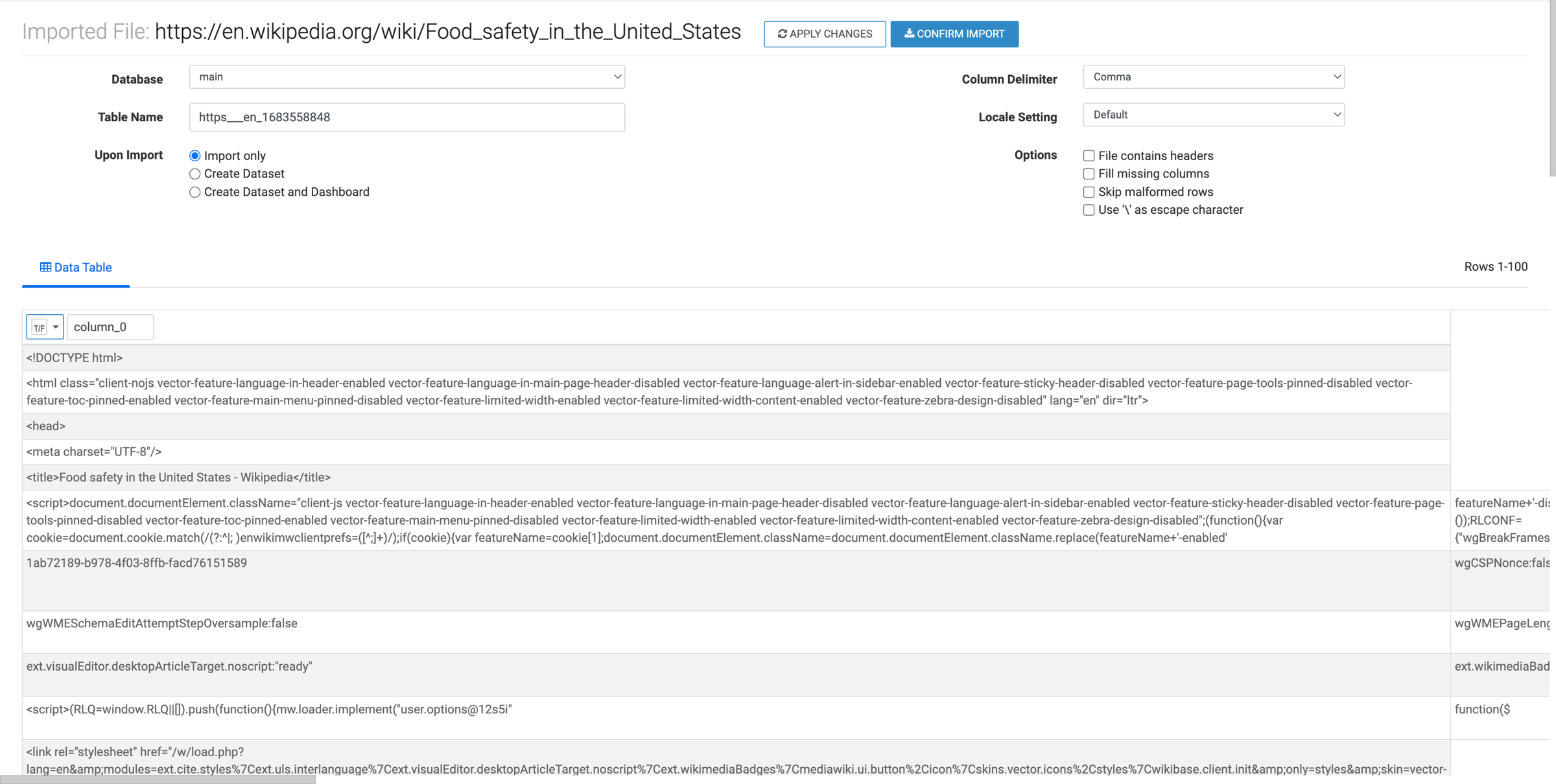Adding data through URL
Learn how to how to add a data file using a URL in Cloudera Data Visualization.
Data files are typically in JSON format. The files may be comma-delimited or they use
other delimiting characters.
-
On the main navigation bar, click DATA.
The Data view appears, open on the Datasets tab.

-
Click ADD DATA.
The Add Data modal window appears.

- Select the URL option, and add the address of the file to the text window, and click GET DATA.
-
Ensure that your data is configured correctly before confirming the
import:
- Under Database, specify
documentation. Alternatively, select another database. - Under Table Name, specify
city_chicago_staff. The system typically assigns a numerical suffix that you can remove. - Under Upon Import, select whether you only want
to import the data or create a dataset and a dashboard based on the
data.
- If you select Create Dataset, you are taken to the Detail page of the dataset you have created when the import is completed.
- If you select Create Dataset and Dashboard, you are taken to the newly created dashboard when the import is completed.
- For Column Delimiter, define the delimiter used in the source file. In this case, the column delimiter is Comma, but it can also be Tab, Space, Semicolon, Colon, Pipe, Control A, or Other. Make the necessary adjustments to this field.
- Under Locale Setting, you can select one of the common options: United States, United Kingdom, Sweden, Norway, or Other. Selecting Other adds a separate field next to the locale setting where you can specify the supported locale. For more information, see Changing the locale setting of an imported file.
- Under Options, select the data clean-up tasks that Cloudera Data Visualization provides prior to data import. These include File contains headers, Fill missing columns, Skip malformed rows, and Use '\' as escape character.
- In the Data Table preview, each column of the table appears with its data type and name. Cloudera Data Visualization detects the data type automatically, but you can change it in this interface prior to import. For example, you may wish to store numerical categories as strings. The data types are Boolean, Integer, Real, String, and Timestamp.
- You can change the name of the table column before importing.

- Under Database, specify
- Click APPLY CHANGES to ensure that all adjustments you made are saved.
-
Click CONFIRM IMPORT.
The Confirm File Import modal window appears, where you have to click CONFIRM IMPORT again.

- To verify that the data has been imported correctly into your system, check the Connection Explorer interface.


